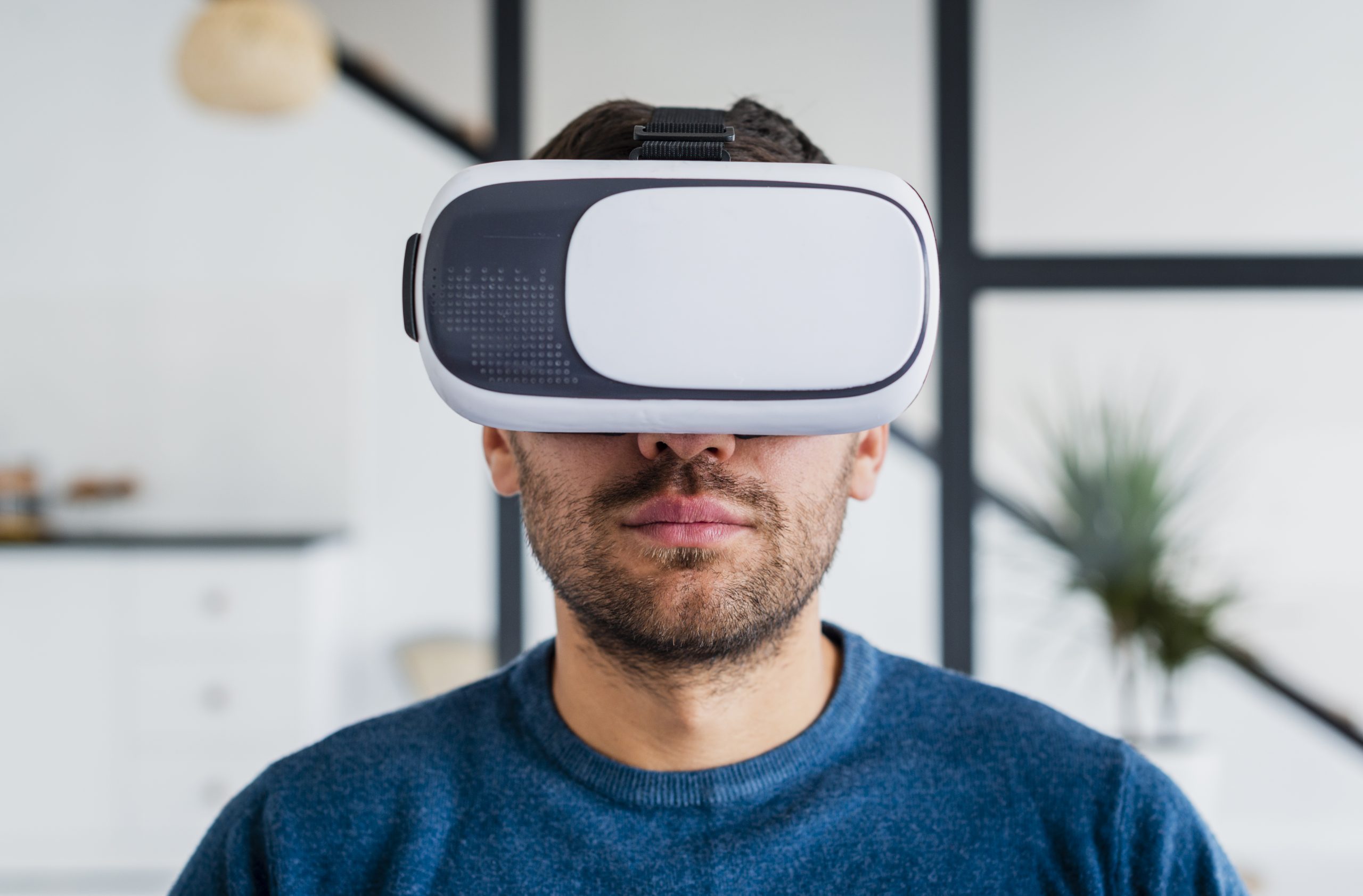Virtual Reality (VR) is widely recognized in the entertainment industry, but in recent years, this technology has emerged as a powerful therapeutic tool in mental health. Studies worldwide demonstrate how VR can be used to treat a wide range of psychological issues, including anxiety, eating disorders, and autism, while also enhancing skills like empathy and emotional regulation.
This article explores how VR is applied in therapy and research, highlighting its significant benefits for mental well-being.
Virtual Reality and the Development of Empathy
An innovative study by the University of Barcelona utilized VR to investigate its potential to foster empathy. Participants experienced scenarios of verbal abuse from two perspectives:
- First-person: As if they were the victim of the abuse.
- Third-person: Observing the abuse as a bystander.
Results:
Participants who experienced the scenario in first-person mode showed greater brain activity associated with empathy and threat perception. This demonstrates that VR can be a valuable tool for enhancing empathy, a critical skill for strengthening interpersonal relationships and improving mental health.
Reference:
Slater, M., Spanlang, B., Sanchez-Vives, M. V., & Blanke, O. (2010). First Person Experience of Body Transfer in Virtual Reality. PLoS ONE, 5(5), e10564.
Reducing Anxiety and Pain in Children
VR has shown promising results in reducing anxiety and pain, particularly in children undergoing medical procedures.
Highlighted Studies:
- Children who used VR before surgeries reported significantly lower levels of anxiety and pain, thanks to a hypnotic state induced by the technology.
- An adjustable interactive VR program used during medical procedures reduced perceptions of pain and stress in children and adolescents.
Conclusion:
The distraction provided by VR, combined with cognitive load management, creates a safe and calming environment for facing challenging situations.
Reference:
Hoffman, H. G., Patterson, D. R., & Carrougher, G. J. (2000). Use of Virtual Reality for Adjunctive Treatment of Adult Burn Pain During Physical Therapy: A Controlled Study. The Clinical Journal of Pain, 16(3), 244-250.
Eating Disorders and Body Image
Studies indicate that VR is effective in treating eating disorders and improving body perception.
Identified Benefits:
- Improvement in self-image and body perception.
- Reduction in self-deprecating thoughts.
- Increased self-esteem through immersive experiences that help rebuild a positive relationship with one’s body.
Conclusion:
The therapeutic approach using VR helps patients develop a more positive relationship with themselves, making the treatment engaging and less invasive.
Reference:
Gutiérrez-Maldonado, J., Wiederhold, B. K., & Riva, G. (2016). Future Directions: How Virtual Reality Can Further Improve the Assessment and Treatment of Eating Disorders and Obesity. Cyberpsychology, Behavior, and Social Networking, 19(2), 148-153.
Virtual Reality and Autism Spectrum Disorder
Research suggests that VR is an effective tool for children with Autism Spectrum Disorder (ASD).
Notable Results:
- Improvement in social skills through interactive simulations.
- Reduction in sensory overload during interactions in complex environments.
Conclusion:
VR allows children with ASD to practice social interactions and develop cognitive skills in a controlled, immersive environment, facilitating social integration.
Reference:
Parsons, S., & Cobb, S. (2011). State-of-the-Art of Virtual Reality Technologies for Children on the Autism Spectrum. European Journal of Special Needs Education, 26(3), 355-366.
Why Virtual Reality is a Revolution in Mental Health
These studies demonstrate that Virtual Reality goes far beyond entertainment, offering therapeutic applications that deeply impact mental health.
Therapeutic Benefits of VR:
- Reduction in anxiety and stress.
- Strengthening of empathy and social skills.
- Improvement in body perception and self-esteem.
- Innovative approaches for complex conditions like ASD and eating disorders.
VR represents the present of mental health, transforming therapies and expanding possibilities for emotional care. By adopting this technology, mental health professionals are paving new paths for human well-being.
Additional References:
- Rizzo, A. S., & Koenig, S. T. (2017). Is Clinical Virtual Reality Ready for Primetime? Neuropsychology, 31(8), 877-899.
- Wiederhold, B. K., & Wiederhold, M. D. (2005). Virtual Reality Therapy for Anxiety Disorders: Advances in Evaluation and Treatment. Washington, DC: American Psychological Association.

